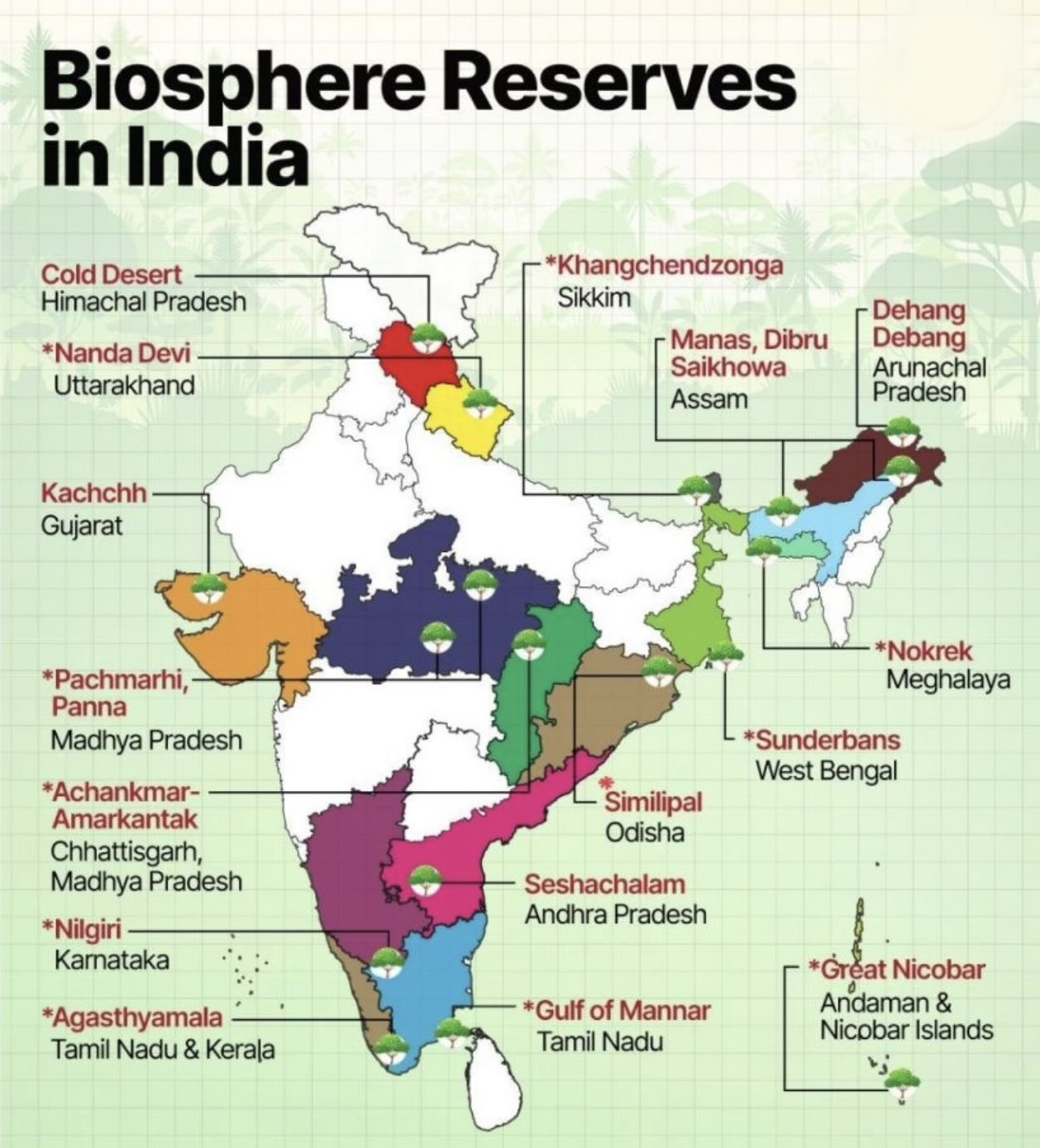Context:
The Cold Desert Biosphere Reserve in Himachal Pradesh (Spiti Valley, Lahaul‑Spiti district) has been officially added to UNESCO’s World Network of Biosphere Reserves (WNBR) under the Man and the Biosphere (MAB) Programme.
· The formal announcement was made during the 37th MAB‑ICC meeting held in Hangzhou, China (September 26‑28, 2025) during the World Congress of Biosphere Reserves.
· This makes the Himachal cold desert region India’s 13th biosphere reserve under the UNESCO global network.
Significance of the Designation:
1. Global Conservation Recognition
Inclusion in UNESCO’s WNBR puts the cold desert of Himachal on the world map as a fragile ecosystem requiring protection and sustainable management.
2. Conservation + Sustainable Development
The Biosphere model (core‑buffer‑transition) allows for preserving ecological integrity while enabling human activity in a sustainable manner, especially in buffer/transition zones.
3. Climate Resilience
High‑altitude cold deserts are extremely sensitive to climate change: glacier retreat, changing precipitation, temperature extremes. Being a UNESCO biosphere reserve can mobilize research, monitoring, adaptation.
4. Biodiversity Protection
Habitat protection for rare species (like snow leopard etc.), preserving medicinal plants, and preventing ecological degradation such as soil erosion, overgrazing etc.
About Cold Desert Biosphere Reserve:
Cold Desert Biosphere Reserve is a biosphere reserve located in the Western Himalayas, within Himachal Pradesh in North India. It was established as a biosphere reserve in August 2009.
Key Features & Geographic Extent:
-
- Area: ~ 7,770 square kilometres.
- Altitude: Ranges from ~ 3,300 metres to ~ 6,600 metres in the Trans‑Himalayan region.
- Key ecological areas include Pin Valley National Park, Kibber Wildlife Sanctuary, Chandratal Wetland, and the Sarchu plains.
- Area: ~ 7,770 square kilometres.
-
- Flora: The reserve supports hundreds of plant species: over 650 herbs, 40‑odd shrubs, ~ 17 tree species. Some are medicinal and endemic. The region is also important for traditional healing systems such as Sowa Rigpa / Amchi.
- Fauna: Includes flagship species like the Snow Leopard, Blue Sheep (bharal) (as prey base), Himalayan Ibex, Tibetan Wolf, Red Fox, and many bird species (e.g., Golden Eagle, Himalayan Snowcock etc.).
- Flora: The reserve supports hundreds of plant species: over 650 herbs, 40‑odd shrubs, ~ 17 tree species. Some are medicinal and endemic. The region is also important for traditional healing systems such as Sowa Rigpa / Amchi.
About UNESCO's Man and Biosphere (MAB) Programme:
UNESCO's Man and Biosphere (MAB) Programme established the World Network of Biosphere Reserves (WNBR) in 1971 to protect biodiversity and promote sustainable development by creating a global network of sites that demonstrate harmonious coexistence between people and nature.
· National governments nominate sites under the MAB program, and the International Co-ordinating Council (ICC) of MAB accepts proposals, integrating them into the WNBR for international recognition, knowledge sharing, and capacity building.
Conclusion:
The induction of Himachal’s cold desert (Spiti region / high‑altitude Trans‑Himalayan cold desert ecosystem) into UNESCO’s World Network of Biosphere Reserves represents a landmark move in India’s environment & conservation domain. It reflects the state and national commitment to conserving fragile ecosystems, climate resilience, and supporting sustainable livelihoods in extreme landscapes.







